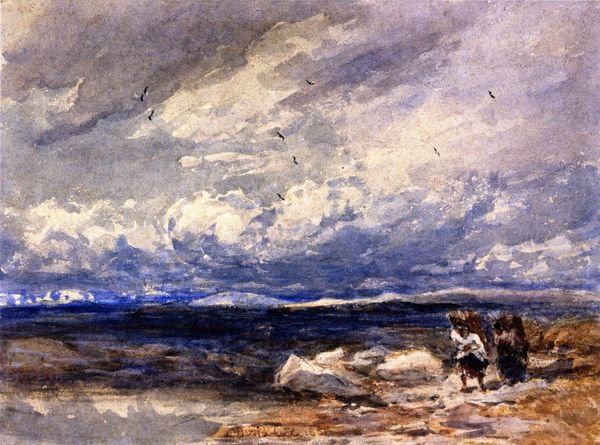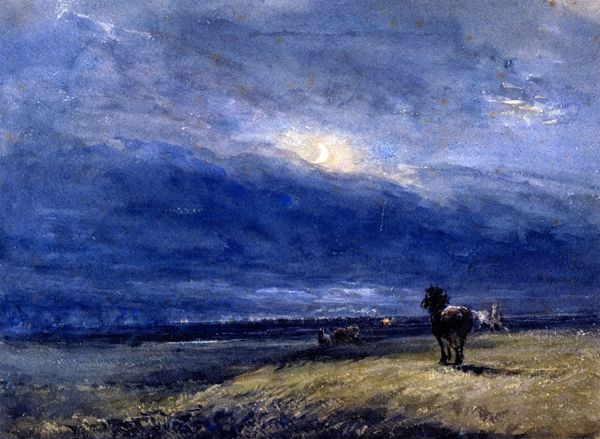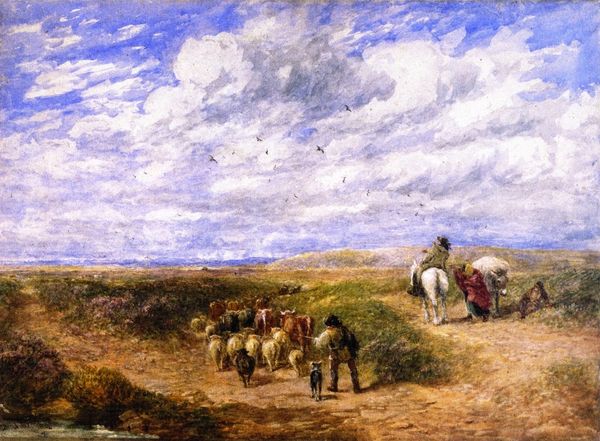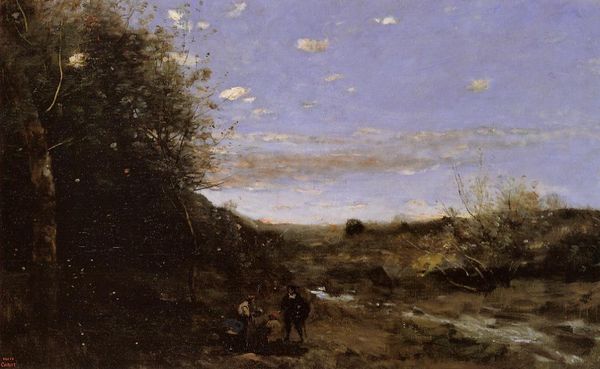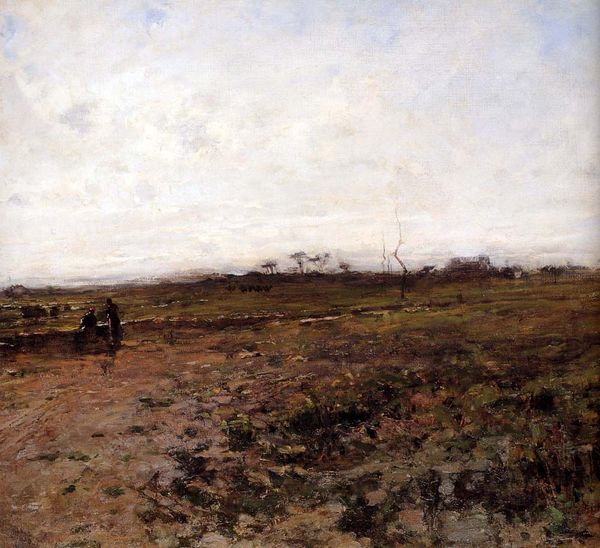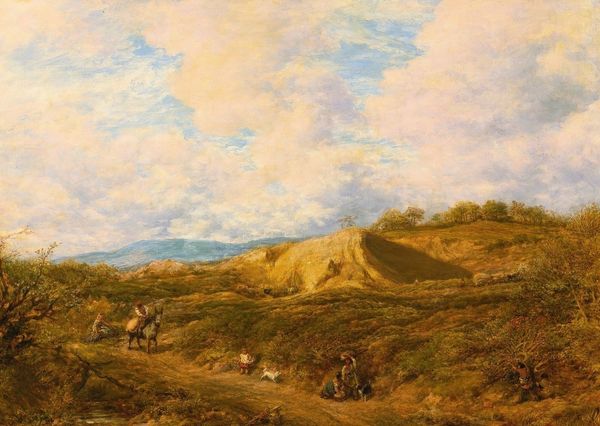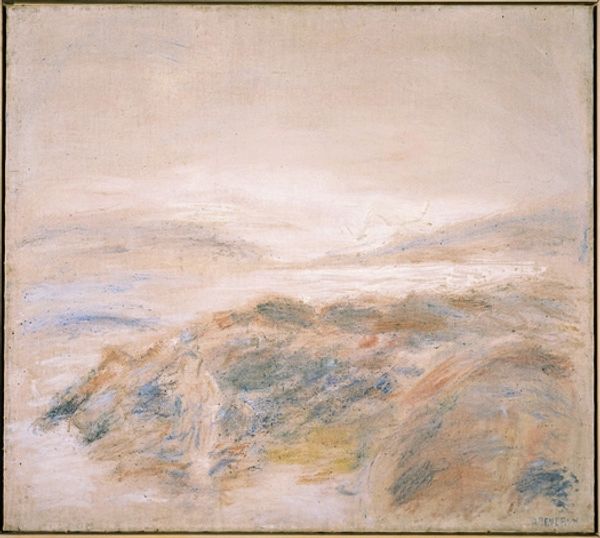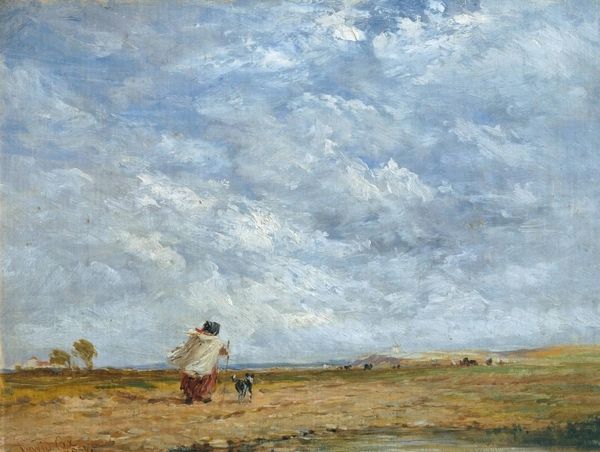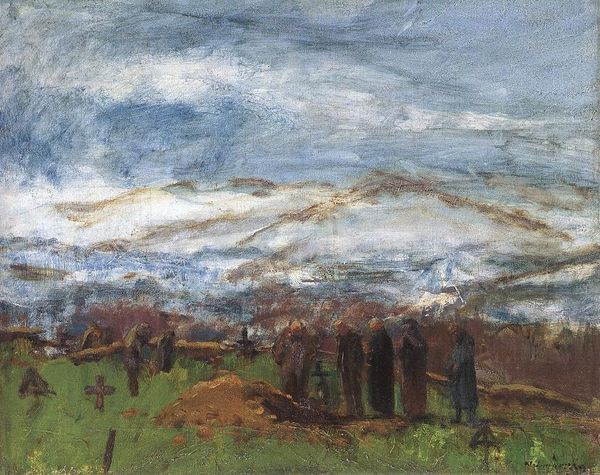
Copyright: Public domain
Editor: This watercolor painting is titled "Crossing the Moor," created in 1858 by David Cox. It definitely has a wistful quality, and makes me wonder about the story behind the travelers we see making their way across the landscape. How do you interpret this work? Curator: The immediate symbolic element that draws my attention is the expansive sky. The clouds aren't merely weather phenomena; they become representations of change, of the fleeting nature of life. Note how the figures on the moor are dwarfed by the vastness of the sky. They represent humanity's struggle against the indifference of nature. What feelings do those contrasts evoke in you? Editor: I see that – a feeling of vulnerability, perhaps? They’re so small against everything else. I also notice that the palette seems limited to blues, browns, and whites – that subdued palette reinforces the feeling. Curator: Indeed. Those subdued tones are not simply aesthetic; they act as a kind of visual shorthand for the trials of everyday existence, particularly resonant for an audience during the Industrial Revolution grappling with rapid societal shifts. It’s as if the colors themselves carry a cultural memory of hardship and perseverance. Notice also the birds – they could signify freedom, or perhaps a journey? What's your take? Editor: I like the idea of the birds representing freedom, set against the limitations of the travelers' earthly journey. It does seem very rooted in its time. Curator: Precisely! And by understanding those symbolic elements, we unlock deeper levels of connection with this deceptively simple landscape. Editor: This really puts the landscape in a whole new perspective! Thanks! Curator: It was a pleasure! Recognizing that every brushstroke is loaded with cultural and personal significance greatly enhances the artistic encounter.
Comments
No comments
Be the first to comment and join the conversation on the ultimate creative platform.
